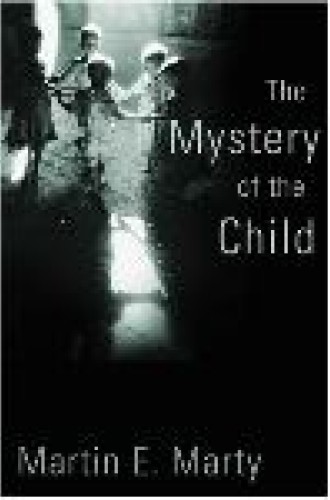The Mystery of the Child
Just a few years ago, people accused religion scholars of ignoring children. Even those who worked in areas likely to require attending to them, such as religious education and pastoral care, often focused on adults instead. But in a relatively short time span, this has changed. New books with titles such as Regarding Children, Seeing Children, Let the Children Come and Welcoming Children point to the need to see children differently and to reclaim the role of religion in redefining them.
The Mystery of the Child is a welcome addition to this literature. It grew out of Martin Marty’s codirectorship of a three-year Emory University project on “The Child in Law, Religion, and Society.” Also, Marty writes in the final pages that he would not have written the book “had not love for and interest in [children] been such a part of my life” as father, foster parent, stepparent, grandfather and great grandfather.
Still, why would someone whose primary field is U.S. Christian history and whose domestic role did not entail direct care of children (his late wife had the “greater investment,” he acknowledges) now find children a worthy subject? Marty is adamant that we need to renew the mystery of the child. Seeing each child first “as a mystery surrounded by mystery” rather than as “a problem faced with a complex of problems” will radically improve our care for children. This thesis, stated plainly on the first page and developed over the next few chapters, seems obvious enough. But as the book progresses, the message gains depth and power.
Our need to control children’s mystery runs deep, and it has crept far into our psyches and sciences. Enter any bookstore and notice how each parenting book focuses on a problem that kids create and then promises the solution, explaining definitively why children do what they do and what we need to do about it. Social scientists are especially tempted to offer exhaustive explanations. But so are pastors and parents. All too often they see faith as a set of truths to be pounded into children (rather than images to be drawn out of them) and discipline as scripturally inspired control through punishment (rather than influence through invitation). Caught always on the brink of contingency, transience and finitude, as David Tracy would say, we all hanker after control. We are all attracted to those who promise to solve our problems with children. Controlling kids is just another attempt to control destiny.
But children are not problems. They are mysteries. What is so mysterious about them? Simply said, children receive. By necessity of birth, children stand in a “gift relation” to others, depending on them for life itself. By definition, they lack status, privilege and power. Mystery, of course, is not solely the province of children. In fact, the “terrible” command of Jesus (terrible because it is so earthshaking for us) is that we must “become like children” to enter into God’s realm. This childness or receptivity should inform all of life’s passages, even the passage out of life, as Marty concludes in his final chapter.
The upshot of this insight for readers of all kinds is release and grace—what Marty dubs “breathing space” that allows us to relax our hold over children and life itself. This means we can wax sentimental about their mystery. Starkly stated, people must stop “sinning against the spirit” of children. “Receiving the child is a radical version of what it is in the Gospels to receive any outsider.”
Marty aims at an audience that extends beyond Christians to humanists and those of other religions who might benefit from a look at the sayings of Jesus, for example, or at what Catholic theologian Karl Rahner has to say about childhood as “infinite openness.” In quintessential Marty fashion, the author has drawn on a wide range of sources: biologists, poets, Reformation theologians, political pundits and Greek philosophers. Those who read Marty’s newsletter, Context, will recognize his familiar style as he shares the wealth of his reading even if this means that he sometimes fails to give other authors their due.
Written during Marty’s eighth decade of life and without any personal stories, the volume does not reflect the immediacy of tending to children and all that it requires. I read part of the book while I was traveling—and watching women in airports and airplanes as they allowed little children to crawl all over them; spilling tears, screams and laughter; and consuming the space, energy, food and attention of the caregivers who sought to contain them constructively. If anything, tending the mystery of a child on a daily basis demands much more than those who write books about them can possibly imagine.






